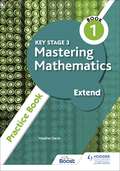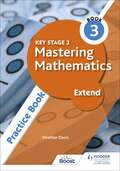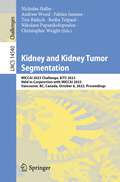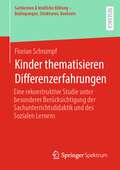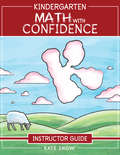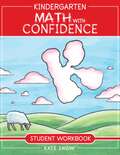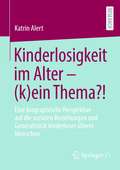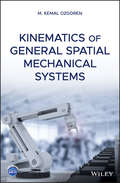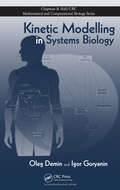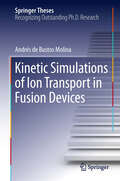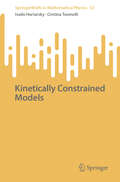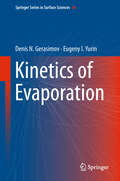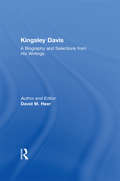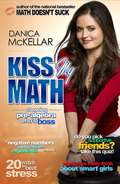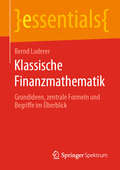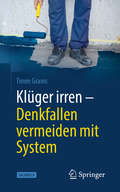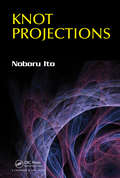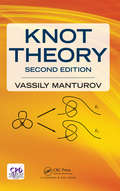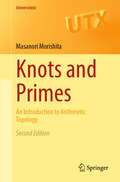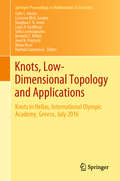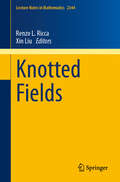- Table View
- List View
Key Stage 3 Mastering Mathematics Extend Practice Book 1
by Heather DavisStrengthen problem-solving skills and challenge more able pupils through extra practice. This book is packed with questions that are perfect for extension activities and learning beyond the curriculum.- Ensure sustained progress and greater depth for more able pupils with challenging practice questions designed to improve their fluency, reasoning and problem-solving skills- Follow a Mastery approach to learning with questions that get progressively more difficult through small steps - Promote conceptual understanding with questions that encourage pupils to apply and reflect on their knowledge- Enable home learning with answers available online
Key Stage 3 Mastering Mathematics Extend Practice Book 2
by Heather DavisStrengthen problem-solving skills and challenge more able pupils through extra practice. This book is packed with questions that are perfect for extension activities and learning beyond the curriculum.- Ensure sustained progress and greater depth for more able pupils with challenging practice questions designed to improve their fluency, reasoning and problem-solving skills- Follow a Mastery approach to learning with questions that get progressively more difficult through small steps - Promote conceptual understanding with questions that encourage pupils to apply and reflect on their knowledge- Enable home learning with answers available online
Key Stage 3 Mastering Mathematics Extend Practice Book 3
by Heather DavisStrengthen problem-solving skills and challenge more able pupils through extra practice. This book is packed with questions that are perfect for extension activities and learning beyond the curriculum.- Ensure sustained progress and greater depth for more able pupils with challenging practice questions designed to improve their fluency, reasoning and problem-solving skills- Follow a Mastery approach to learning with questions that get progressively more difficult through small steps - Promote conceptual understanding with questions that encourage pupils to apply and reflect on their knowledge- Enable home learning with answers available online
Kidney and Kidney Tumor Segmentation: MICCAI 2023 Challenge, KiTS 2023, Held in Conjunction with MICCAI 2023, Vancouver, BC, Canada, October 8, 2023, Proceedings (Lecture Notes in Computer Science #14540)
by Andrew Wood Nicholas Heller Fabian Isensee Nikolaos Papanikolopoulos Christopher Weight Tim Rädsch Resha TeipaulThis book constitutes the Third International Challenge on Kidney and Kidney Tumor Segmentation, KiTS 2023, which was held in conjunction with the 26th International Conference on Medical Image Computing and Computer-Assisted Intervention, MICCAI 2023. The challenge took place in Vancouver, BC, Canada, on October 8, 2023. The 22 contributions presented in this book were carefully reviewed and selected from 29 submissions. This challenge aims to develop the best system for automatic semantic segmentation of kidneys, renal tumors and renal cysts.
Kinder thematisieren Differenzerfahrungen: Eine rekonstruktive Studie unter besonderer Berücksichtigung der Sachunterrichtsdidaktik und des Sozialen Lernens (Sachlernen & kindliche Bildung – Bedingungen, Strukturen, Kontexte)
by Florian SchrumpfWelches Potenzial hat der Sachunterricht für die Thematisierung kindlicher Differenzerfahrungen? Und kann in diesem Zusammenhang der Begriff des Sozialen Lernens didaktische und forschungsmethodologische Impulse für die fachdidaktische Forschung zu Differenzerfahrungen bereithalten? Florian Schrumpf geht in dem vorliegenden Buch diesen Fragen nach und entfaltet seine Argumentation durch Überlegungen zum Passungsverhältnis zwischen Sachunterrichtsdidaktik und Sozialem Lernen. Die bildungstheoretische Diskussion wird dabei mit einem soziologischen Zugang zu Kinderkulturen verbunden: Ein empirisches Forschungsvorhaben rekonstruiert das Sprechen über Differenz von Kindern in Gruppendiskussionen. Aus den theoretischen und empirischen Erkenntnissen werden für die Sachunterrichtsdidaktik und das Soziale Lernen didaktische Konsequenzen gezogen. Abschließend werden das Gruppendiskussionsverfahren sowie die Dokumentarische Methode hinsichtlich ihrer Potenziale und Herausforderungen für die fachdidaktische Forschung mit Kindern kritisch reflektiert.
Kindergarten Math With Confidence Instructor Guide (Math with Confidence #1)
by Kate SnowComprehensive coverage of all essential kindergarten math topics. With this scripted, open-and-go program, parents can help their children master all the concepts typically covered in kindergarten: counting to 100 writing numbers beginning addition and subtraction shapes and patterns coins, time, and measurement Carefully-sequenced, confidence-building lessons will help children develop a strong understanding of math, step by step. Daily review will ensure they fully master what they have learned. With this blend of conceptual understanding and traditional skill practice, children will be well-prepared for first grade. This book is the Instructor Guide to Kindergarten Math With Confidence: Student Workbook
Kindergarten Math With Confidence Student Workbook (Math With Confidence Ser. #2)
by Kate SnowQuick and easy workbook pages will help children review and practice what they've learned. They'll also develop children's fine-motor skills and help them get used to pencil-and-paper work, which will prepare them for greater independence in first grade. This simple, beautiful, age-appropriate workbook is colorfully illustrated by Itamar Katz. This Student Workbook accompanies Kindergarten Math With Confidence: Instructor Guide .
Kinderlosigkeit im Alter – (k)ein Thema?!: Eine biographische Perspektive auf die sozialen Beziehungen und Generativität kinderloser älterer Menschen
by Katrin AlertDie Studie zeigt die Vielfältigkeit kinderloser Lebensentwürfe und -verläufe auf. Dabei wird insbesondere das Phänomen erworbene Kinderlosigkeit differenzierter als in vielen bisherigen Untersuchungen beleuchtet. Zudem wird der Prozesscharakter von Kinderlosigkeit deutlich herausgearbeitet und gezeigt, dass mit dem zeitlichen Abstand im Alter die Entstehung der eigenen Kinderlosigkeit zum Teil eine Umdeutung erfährt, um von den kinderlosen Älteren sinnhaft in die Biographie gefügt werden zu können.Die AutorinKatrin Alert ist derzeit Geschäftsführerin des Forschungskollegs Wohlbefinden bis ins hohe Alter (gefördert vom Ministerium für Kultur und Wissenschaft des Landes Nordrhein-Westfalen) mit zehn Doktorand*innen an der Universität zu Köln.
Kinematics of General Spatial Mechanical Systems
by M. Kemal OzgorenGuide to kinematic theory for the analysis of spatial mechanisms and manipulators Kinematics of General Spatial Mechanical Systems is an effective and proficient guide to the kinematic description and analysis of the spatial mechanical systems such as serial manipulators, parallel manipulators and spatial mechanisms. The author highlights the analytical and semi-analytical methods for solving the relevant equations and considers four main elements: The mathematics of spatial kinematics with the necessary theorems, formulas and methods; The kinematic description of the links and joints including the rolling contact joints; Writing the kinematic chain and loop equations for the systems to be analyzed; and Solving these equations for the unspecified variables both in the forward and inverse senses together with the multiplicity and singularity analyses. Comprehensive in scope, the book covers topics ranging from rather elementary subjects such as spatial mechanisms with single degree of freedom to more advanced topics such as serial manipulators including redundant and deficient ones, parallel manipulators, and non-holonomic spatial cam mechanisms that involve rolling without slipping motions. The author presents an effective and accessible symbolic manipulation method making it possible to obtain neat and transparent expressions that describe the systems showing all the kinematic details. Such expressions readily lead to analytical or semi-analytical solutions. They also facilitate the identification and analysis of the multiplicities and singularities. This all-time beneficial book: Provides an easy-to-use systematic formulation method that is applicable to all sorts of spatial machanisms and manipulators Introduces a symbolic manipulation method, which is effective and straightforward to use, so that kinematic relationships can be simplified by using all the special geometric features of the system Offers an accessible format that uses a systematic and easy-to-conceive notation which has proven successful Presents content written by an author who is a renowned expert in the field Includes an accompanying website Written for academicians, students, engineers, computer scientists and any other people working in the area of spatial mechanisms and manipulators, Kinematics of General Spatial Mechanical Systems provides a clear notation, formulation, and a logical approach to the topic and offers a fresh presentation of challenging material.
Kinetic Modelling in Systems Biology
by Oleg Demin Igor GoryaninWith more and more interest in how components of biological systems interact, it is important to understand the various aspects of systems biology. Kinetic Modelling in Systems Biology focuses on one of the main pillars in the future development of systems biology. It explores both the methods and applications of kinetic modeling in this emerging field.The book introduces the basic biological cellular network concepts in the context of cellular functioning, explains the main aspects of the Edinburgh Pathway Editor (EPE) software package, and discusses the process of constructing and verifying kinetic models. It presents the features, user interface, and examples of DBSolve as well as the principles of modeling individual enzymes and transporters. The authors describe how to construct kinetic models of intracellular systems on the basis of models of individual enzymes. They also illustrate how to apply the principles of kinetic modeling to collect all available information on the energy metabolism of whole organelles, construct a kinetic model, and predict the response of the organelle to changes in external conditions. The final chapter focuses on applications of kinetic modeling in biotechnology and biomedicine.Encouraging readers to think about future challenges, this book will help them understand the kinetic modeling approach and how to apply it to solve real-life problems.Downloadable Resources FeaturesExtensively used throughout the text for pathway visualization and illustration, the EPE software is available on the accompanying downloadable resources. The downloadable resources also include pathway diagrams in several graphical formats, DBSolve installation with examples, and all models from the book with dynamic visualization of simulation results, allowing readers to perform in silico simulations and use the models as templates for further applications.
Kinetic Simulations of Ion Transport in Fusion Devices
by Andrés de Bustos MolinaThis thesis deals with the problem of ion confinement in thermonuclear fusion devices. It is a topic of general interest, as it helps to understand via numerical simulations the ion confinement properties in complex geometries, in order to predict their behavior and maximize the performance of future fusion reactors. The main work carried out in this thesis is the improvement and exploitation of an existing simulation code called ISDEP. This code solves the so-called ion collisional transport in arbitrary plasma geometry, improving in this sense other existing codes. Additionally, it presents outstanding portability and scalability in distributed computing architectures, such as Grid or Volunteer Computing. The main physical results can be divided into two blocks. First, the study of 3D ion transport in ITER is presented. ITER is the largest fusion reactor (under construction) and most of the simulations so far assume the axis-symmetry of the device. Unfortunately, this symmetry is only an approximation because of the discrete number of magnetic coils used. ISDEP has shown, using a simple model of the 3D magnetic field, how the ion confinement is affected by this symmetry breaking. Secondly, ISDEP has been applied successfully to the study of fast ion dynamics in fusion plasmas. The fast ions, with energies much larger than the thermal energy, are a product of the device's heating system. Thus, a numerical predictive tool can be used to improve the heating efficiency. ISDEP has been combined with the FAFNER2 code to study such ions in stellarator (TJ-II, LHD) and tokamak (ITER) geometries. It has also been validated by experimental results. In particular, comparisons with the CNPA diagnostic in the TJ-II stellarator are remarkable.
Kinetically Constrained Models (SpringerBriefs in Mathematical Physics #53)
by Ivailo Hartarsky Cristina ToninelliThis book offers an in-depth review of kinetically constrained models (KCMs), a topic that lies at the crossroads of probability and statistical mechanics. KCMs have captivated physicists ever since their introduction in the 1980s. Their remarkable glassy behavior makes them an essential toy model for exploring the liquid–glass transition, a longstanding puzzle in condensed matter physics. Over the past 20 years, KCMs have also gained significant attention in mathematics. Despite belonging to the well-established domain of interacting particle systems with stochastic dynamics, the presence of dynamical constraints gives rise to novel phenomena. These include anomalously long mixing times, aging effects, singularities in the dynamical large deviation function, dynamical heterogeneities, and atypical ergodicity-breaking transitions corresponding to the emergence of a large variety of amorphous structures. Authored by two leading experts in the field, this volume offers an extensive overview of rigorous results in the field. The self-contained exposition, with emphasis on high-level ideas and common techniques, is suitable for novices, as well as seasoned researchers, with backgrounds in mathematics or physics. The text covers crucial connections to bootstrap percolation cellular automata, along with sharp thresholds, universality, out-of-equilibrium dynamics, and more. The volume features challenging open questions and a detailed bibliography to direct future research. Whether as a reference or a study guide, it is a valuable resource for those interested in KCM.
Kinetics of Evaporation (Springer Series in Surface Sciences #68)
by Denis N. Gerasimov Eugeny I. YurinThis monograph discusses the essential principles of the evaporationprocess by looking at it at the molecular and atomic level.In the first part methods of statistical physics, physical kinetics andnumerical modeling are outlined including the Maxwell’s distributionfunction, the Boltzmann kinetic equation, the Vlasov approach, and theCUDA technique.The distribution functions of evaporating particles are then defined.Experimental results on the evaporation coefficient and the temperaturejump on the evaporation surface are critically reviewed and compared tothe theory and numerical results presented in previous chapters.The book ends with a chapter devoted to evaporation in differentprocesses, such as boiling and cavitation.This monograph addressesgraduate students and researchers working on phase transitions andrelated fields.
Kingsley Davis: A Biography and Selections from His Writings
by David M. Heer"Kingsley Davis (1908-1997) was one of the pioneers in social demography, and was particularly identified with the theory of the demographic transition. This holds that the process of industrialization first causes mortality to decline, leading to a substantial rate of population growth and only later causes fertility to fall, leading eventually to the cessation of population growth. Kingsley Davis is especially remembered for his arresting and forceful critique of family-planning programs intended to achieve zero population growth.Before he devoted his major attention to social demography, Davis had distinguished himself through influential articles on the structure of family and kinship, including the topics of jealousy and sexual property, the sociology of prostitution, and illegitimacy. He had an early interest in structural-functional analysis, which resulted in his famous and controversial article on stratification, co-authored with Wilbert Moore, and his equally famous presidential address to the American Sociological Association in 1959.David Heer's biography of Kingsley Davis is based on material contained in the Kingsley Davis Archive at the Hoover Institution Library at Stanford University, the Kingsley Davis graduate file at Harvard University, the interview of Kingsley Davis by Jean van der Tak in Demographic Destinies (1990), and David Heer's personal relationship with Kingsley Davis. The book also contains thirty of the most important writings by Kingsley Davis. These were chosen, in part, for the number of citations received in the Cumulative Social Science Citation Index, and in part to ensure that readers would be able to assess the continuity of Kingsley Davis's ideas at all stages of his career."
Kiss My Math: Showing Pre-Algebra Who's Boss
by Danica MckellarKiss My Math will help math-phobic teenagers everywhere chill out about math, and finally negative numbers, variables, absolute values, exponents, and more. Each chapter features: Step-by-step instruction, time-saving tips and tricks, illuminating practice problems with detailed solutions etc.
Klassische Finanzmathematik: Grundideen, zentrale Formeln und Begriffe im Überblick (essentials)
by Bernd LudererDieses essential vermittelt grundlegende Formeln, Methoden und Ideen der klassischen Finanzmathematik. Da die klassische Finanzmathematik mit elementaren mathematischen Hilfsmitteln auskommt, kann jede/r interessierte Leser/in mit durchschnittlichen mathematischen Schulkenntnissen diesem Text gut folgen. Das Kernstück bilden Zins- und Zinseszinsrechnung, Rentenrechnung, Tilgungsrechnung und Kursrechnung. Eine größere Zahl praktischer Beispiele veranschaulicht die mathematischen Fragestellungen.
Klüger irren - Denkfallen vermeiden mit System
by Timm GramsKurz entschlossen — danebengehauen.... Vorher nachdenken, nachmessen oder kalkulieren wäre wohl besser gewesen! Dieses Buch hilft Ihnen, Ihre Denkmechanismen zu erkunden und zu verbessern. Fehler und Zufall treiben den Fortschritt an. So entsteht das Neue. Wer es sehen will, braucht Wissen und die Fähigkeit, überraschende Beobachtungen richtig einzuordnen.Es ist jedoch kein Erfolgsrezept, die alten Fehler wieder und wieder zu machen. Lernen Sie aus Ihren Reinfällen und denjenigen der anderen.Weniges wird uns bewusst. Denkmechanismen wirken meist im Verborgenen, ungefragt und blitzschnell. Sie sind bewährt, manchmal aber auch verkehrt. Optische und kognitive Täuschungen, irreführende Statistiken, Paradoxien, Manipulationsversuche lauern überall. Viele Irrwege lassen sich durch den Einsatz von etwas Logik und Mathematik vermeiden.Lernen Sie, wie Sie Warnzeichen erkennen und richtig deuten können, wie weit das von Ihnen oft und meist unbewusst genutzte Indifferenzprinzip trägt, welche Rolle Analogien bei der Entstehung des Neuen spielen und wann Sie gefahrlos verallgemeinern dürfen.2., überarbeitete und erweiterte Auflage.
Knock on Wood: Luck, Chance, and the Meaning of Everything
by Jeffrey S. RosenthalFor readers of Nassim Nicholas Taleb and Daniel Levitin with a twist of Bill Bryson—a lighthearted, entertaining and fateful exploration of luck in everyday lifeFor centuries, people around the world have prayed for good luck and warded against bad. Every language features a good luck greeting. Sailors have long looked for an albatross on the horizon as a symbol of good fortune. Jade, clovers, rabbits’ feet, wishbones: these items have lined the pockets of those seeking good fortune. For some, it’s bad luck to walk under a ladder, to enter and leave a home through different doors or to say “Macbeth” in a theatre. But is there such a thing as luck, or does luck often just explain common sense? Don’t walk under a ladder because, well, that’s just dangerous. You won the lottery not because of any supernatural force but because a random number generator selected the same numbers that you picked out at the corner store. You run into a neighbour from your street on the other side of the world: Random chance or pure fate? (Or does it depend on how much you like your neighbour?)Jeffrey S. Rosenthal, author of the bestseller Struck by Lightning: The Curious World of Probabilities, was born on a Friday the thirteenth, a fact that he discovered long after he had become one of the world’s pre-eminent statisticians. Had he been living ignorantly and innocently under an unlucky cloud for all those years? Or is thirteen just another number? As a scientist and a man of reason, Rosenthal has long considered the value of luck, good and bad, seeking to measure chance and hope in formulas scratched out on chalkboards.In Knock on Wood, Rosenthal, with great humour and irreverence, divines the world of luck, fate and chance, putting his considerable scientific acumen to the test in deducing whether luck is real or the mere stuff of superstition.
Knot Projections
by Noboru ItoKnot Projections offers a comprehensive overview of the latest methods in the study of this branch of topology, based on current research inspired by Arnold’s theory of plane curves, Viro’s quantization of the Arnold invariant, and Vassiliev’s theory of knots, among others. The presentation exploits the intuitiveness of knot projections to introduce the material to an audience without a prior background in topology, making the book suitable as a useful alternative to standard textbooks on the subject. However, the main aim is to serve as an introduction to an active research subject, and includes many open questions.
Knot Theory: Second Edition
by Vassily Olegovich ManturovOver the last fifteen years, the face of knot theory has changed due to various new theories and invariants coming from physics, topology, combinatorics and alge-bra. It suffices to mention the great progress in knot homology theory (Khovanov homology and Ozsvath-Szabo Heegaard-Floer homology), the A-polynomial which give rise to strong invariants of knots and 3-manifolds, in particular, many new unknot detectors. New to this Edition is a discussion of Heegaard-Floer homology theory and A-polynomial of classical links, as well as updates throughout the text.<P><P> Knot Theory, Second Edition is notable not only for its expert presentation of knot theory’s state of the art but also for its accessibility. It is valuable as a profes-sional reference and will serve equally well as a text for a course on knot theory.
Knots and Primes
by Masanori MorishitaThis is a foundation for arithmetic topology - a new branch of mathematics which is focused upon the analogy between knot theory and number theory. Starting with an informative introduction to its origins, namely Gauss, this text provides a background on knots, three manifolds and number fields. Common aspects of both knot theory and number theory, for instance knots in three manifolds versus primes in a number field, are compared throughout the book. These comparisons begin at an elementary level, slowly building up to advanced theories in later chapters. Definitions are carefully formulated and proofs are largely self-contained. When necessary, background information is provided and theory is accompanied with a number of useful examples and illustrations, making this a useful text for both undergraduates and graduates in the field of knot theory, number theory and geometry.
Knots and Primes: An Introduction to Arithmetic Topology (Universitext)
by Masanori MorishitaThis book provides a foundation for arithmetic topology, a new branch of mathematics that investigates the analogies between the topology of knots, 3-manifolds, and the arithmetic of number fields. Arithmetic topology is now becoming a powerful guiding principle and driving force to obtain parallel results and new insights between 3-dimensional geometry and number theory.After an informative introduction to Gauss' work, in which arithmetic topology originated, the text reviews a background from both topology and number theory. The analogy between knots in 3-manifolds and primes in number rings, the founding principle of the subject, is based on the étale topological interpretation of primes and number rings. On the basis of this principle, the text explores systematically intimate analogies and parallel results of various concepts and theories between 3-dimensional topology and number theory. The presentation of these analogies begins at an elementary level, gradually building to advanced theories in later chapters. Many results presented here are new and original.References are clearly provided if necessary, and many examples and illustrations are included. Some useful problems are also given for future research. All these components make the book useful for graduate students and researchers in number theory, low dimensional topology, and geometry.This second edition is a corrected and enlarged version of the original one. Misprints and mistakes in the first edition are corrected, references are updated, and some expositions are improved. Because of the remarkable developments in arithmetic topology after the publication of the first edition, the present edition includes two new chapters. One is concerned with idelic class field theory for 3-manifolds and number fields. The other deals with topological and arithmetic Dijkgraaf–Witten theory, which supports a new bridge between arithmetic topology and mathematical physics.
Knots, Low-Dimensional Topology and Applications: Knots in Hellas, International Olympic Academy, Greece, July 2016 (Springer Proceedings in Mathematics & Statistics #284)
by Louis H. Kauffman Sofia Lambropoulou Colin C. Adams Cameron McA. Gordon Vaughan F. R. Jones Kenneth C. Millett Jozef H. Przytycki Renzo Ricca Radmila SazdanovicThis proceedings volume presents a diverse collection of high-quality, state-of-the-art research and survey articles written by top experts in low-dimensional topology and its applications. The focal topics include the wide range of historical and contemporary invariants of knots and links and related topics such as three- and four-dimensional manifolds, braids, virtual knot theory, quantum invariants, braids, skein modules and knot algebras, link homology, quandles and their homology; hyperbolic knots and geometric structures of three-dimensional manifolds; the mechanism of topological surgery in physical processes, knots in Nature in the sense of physical knots with applications to polymers, DNA enzyme mechanisms, and protein structure and function. The contents is based on contributions presented at the International Conference on Knots, Low-Dimensional Topology and Applications – Knots in Hellas 2016, which was held at the International Olympic Academy in Greece in July 2016. The goal of the international conference was to promote the exchange of methods and ideas across disciplines and generations, from graduate students to senior researchers, and to explore fundamental research problems in the broad fields of knot theory and low-dimensional topology. This book will benefit all researchers who wish to take their research in new directions, to learn about new tools and methods, and to discover relevant and recent literature for future study.
Knotted Fields (Lecture Notes in Mathematics #2344)
by Xin Liu Renzo L. RiccaThis book provides a remarkable collection of contributions written by some of the most accredited world experts in the modern area of Knotted Fields. Scope of the book is to provide an updated view of some of the key aspects of contemporary research, with the purpose to cover basic concepts and techniques commonly used in the context of Knotted Fields. The material is presented to help the interested reader to become familiar with the fundamentals, from fluid flows to electromagnetism, from knot theory to numerical visualization, while presenting the new ideas and results in an accessible way to beginners and young researchers. No advanced knowledge is required, and at the end of each chapter, key references are provided to offer further information on particular topics of interest. All those keen on modern applications of topological techniques to the study of knotted fields in mathematical physics will find here a valuable and unique source of information. The work will be of interest to many researchers in the field.
Knowing and Teaching Elementary Mathematics: Teachers' Understanding of Fundamental Mathematics in China and the United States (Studies in Mathematical Thinking and Learning Series)
by Liping MaThe 20th anniversary edition of this groundbreaking and bestselling volume offers powerful examples of the mathematics that can develop the thinking of elementary school children. Studies of teachers in the U.S. often document insufficient subject matter knowledge in mathematics. Yet, these studies give few examples of the knowledge teachers need to support teaching, particularly the kind of teaching demanded by reforms in mathematics education. Knowing and Teaching Elementary Mathematics describes the nature and development of the knowledge that elementary teachers need to become accomplished mathematics teachers, and suggests why such knowledge seems more common in China than in the United States, despite the fact that Chinese teachers have less formal education than their U.S. counterparts. Along with the original studies of U.S. and Chinese teachers’ mathematical understanding, this 20th anniversary edition includes a new preface and a 2013 journal article by Ma, "A Critique of the Structure of U.S. Elementary School Mathematics" that describe differences in U.S. and Chinese elementary mathematics. These are augmented by a new series editor’s introduction and two key journal articles that frame and contextualize this seminal work.
